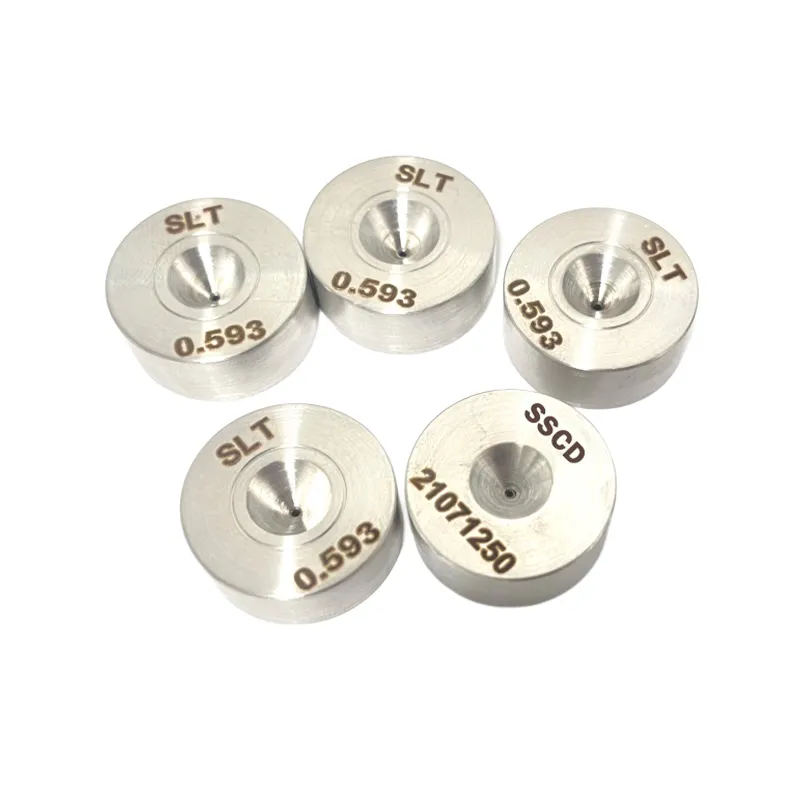What is the die angle in wire drawing?
What is the die angle in wire drawing
wire drawing
In the manufacturing process of metal wire, die angle is a key parameter. It refers to the angle between the metal wire and the die hole, which plays a vital role in the shaping and quality of the wire drawing process.

The choice of mold angle is determined based on different metal materials and wire diameters. Typically, the mold angle is adjusted based on the plasticity and hardness of the metal and the desired forming effect. A smaller mold angle can increase the plastic deformation of the metal wire, thereby helping to improve the ductility and strength of the wire. However, if the mold angle is too small, it may cause excessive deformation of the metal wire during the drawing process, causing unnecessary material loss and quality problems on the wire surface. On the contrary, a larger mold angle can reduce the plastic deformation of the metal wire, but may reduce the ductility and strength of the wire.
During the metal wire drawing process, the mold angle also affects the surface quality of the wire. Appropriate mold angle can reduce the friction between the metal wire and the mold hole, reducing the occurrence of surface defects and uneven deformation. In addition, the mold angle can also affect the dimensional accuracy and surface finish of the metal wire. Therefore, during the wire drawing process, choosing the appropriate die angle is crucial to ensure the quality and performance of the wire.
It is worth noting that different metal materials and wire diameters may require different die angles. Therefore, in practical applications, it needs to be adjusted and optimized according to specific conditions. In addition, the choice of mold angle also needs to take production efficiency and cost into consideration. Smaller mold angles may increase mold wear and frequency of replacement, thereby increasing production costs and downtime. Therefore, it is necessary to comprehensively consider production efficiency and cost factors while ensuring wire quality.
In summary, die angle plays an important role in the metal wire drawing process. Choosing the appropriate mold angle can improve the plastic deformation, surface quality and dimensional accuracy of the wire, thereby ensuring the quality and performance of the wire. With the continuous advancement of technology, the research and optimization of mold angles will bring more efficient and better production solutions to the metal wire manufacturing industry.
 English
English Español
Español Português
Português русский
русский français
français 日本語
日本語 Deutsch
Deutsch Tiếng Việt
Tiếng Việt Nederlands
Nederlands ไทย
ไทย Polski
Polski 한국어
한국어 Svenska
Svenska magyar
magyar Malay
Malay বাংলা
বাংলা Dansk
Dansk Suomi
Suomi हिन्दी
हिन्दी Pilipino
Pilipino Türk
Türk Gaeilge
Gaeilge عربى
عربى Indonesia
Indonesia norsk
norsk čeština
čeština Ελληνικά
Ελληνικά Українська
Українська नेपाली
नेपाली Burmese
Burmese български
български ລາວ
ລາວ Latine
Latine slovenský
slovenský Lietuvos
Lietuvos

Changzhou Shen Litong Mould invites you to visit the exhibition
From August 27th to 29th, 2025, at SHANGHAI NEW INTERNATIONAL EXPO CENTRE,the 12th China International Wire&Cable Industry Exhibition (Hall E1, G21), Shen Litong Dies sincerely invites you to visit, exchange and offer guidance, and jointly explore new developments in the industry.
Read MoreOptimizing Your Wire Drawing Process: Selecting the Ideal Die Configuration for Material & Application
The wire drawing process is a critical metal forming operation that reduces the cross-section of wire by pulling it through a series of progressively smaller dies.
Read MoreCommon Wire Surface Defects: Causes and Die-Related Solutions
Abrasions or Built-up Edges (BUE): Accumulation of wire material (e.g., copper, aluminum) on the die surface, which then scratches subsequent wire.
Read More